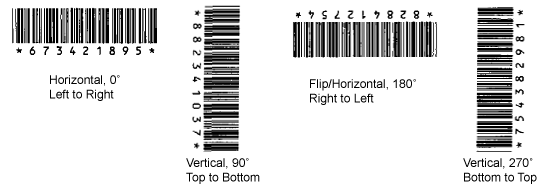Bar code orientation
When the Bar Code Locator is executed, the document is searched and any detected bar codes are returned, regardless of their orientation.
The location and orientation of a bar code can differ between documents and classes. Bar codes have vertical lines of different widths and spacings and may also have numbers or letters printed below reading left to right. A document may have a bar code printed sideways due to space restrictions, or a bar code sticker may be put on upside down. You can specify the bar code orientation to help with detection.
The following image shows examples of how a bar code can be oriented on a document.
